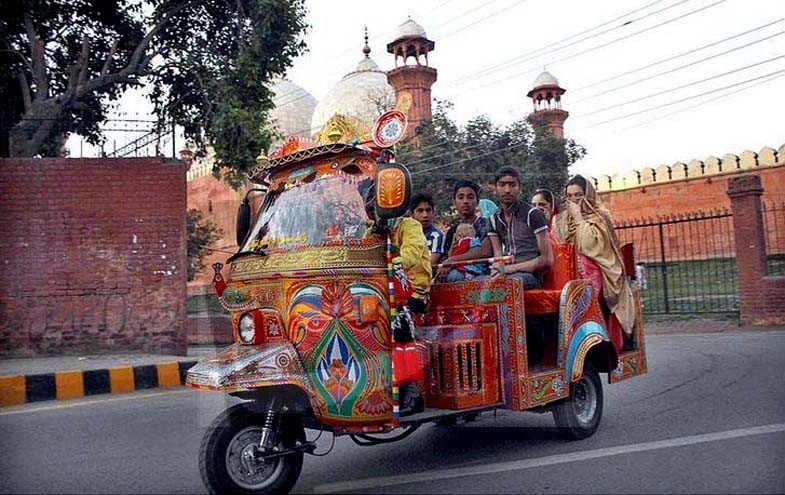
It seemed like an innovative, economical and fun way to see the old Lahore and to appreciate its historic worth

It is believed, across the subcontinent, that if you haven’t seen Lahore, you haven’t really lived. Based in the city for more than five years now, I must say I missed a lot of what this city has to offer. Till recently.
I wanted to take a tour to the Walled City. I was told about this rikshaw service called ‘Rangeela rikshaw.’ It seemed like an innovative, economical and fun way to see the old Lahore and to appreciate its historic worth. Especially for someone like me who had no idea of the ways of androon shehr, the idea seemed just perfect.
This was no ordinary rikshaw; a large, six-seat, smoke- and noise-free three-wheeler, decorated with truck art. The tour comprised a round of the Walled City making sure no historical site was missed.
Our taken route was from Dehli Gate to Fort Road, travelling along Shahi Hamam, Wazir Khan Masjid, Sonehri Masjid, Kinari Bazaar, Akbari Mandi markets and a bangles market.
Another route that these rikshaws offers is from Bhatti Gate to Fort Road, covering Allama Iqbal House, Fakir Khana Museum and Naqsh Art Gallery.
The beauty of old Lahore justly bedazzled me, the juxtaposition of Mughal and British heritage with a verdant landscape was a visual delight.
Wazir Khan Mosque was the major attraction of our tour. The mosque is known for being a testimony to Mughals’ affinity to finesse in architecture. Constructed during 1634-41, it remains one the most important landmarks of the city.
Roads inside Delhi Gate were some of the busiest in the city and made it difficult for the vehicles to pass. But then, in such situations, a rikshaw is the best choice, isn’t it?
Androon Lahore holds many a magical tale from the past. According to Archeologists, Lahore dates back to 2000 BC and went by different names throughout history. Since its creation, it changed hands from Hindus, Buddhists, Greeks, Muslims, Sikhs and the British, before becoming the cultural capital and the heart of modern-day Pakistan.
Back in the era of the Mughals, the city owing to its political significance was guided by its walls and 13 gates. Although after invasion, the British destroyed these walls and in mid 1800s these were replaced by gardens.
Inside the Walled City, a whole different world exists, the world very unlike the modern Lahore I have known, with its international food chains, state-of-the-art buildings, imported brands, bridges, underpasses and signal-free roads.
Services like Rangeela rikshaw are commendable as they are promoting tourism, in their own sweet little way. I can say it now, having taken the gorgeous ride.